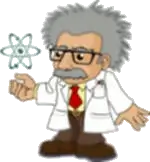Heat energy
Energy is measured using the unit Joule (J). Temperature is measured using the unit degree Celsius °C). To increase the temperature of 1 liter of water by 1°C, 4200 J of heat energy is required.
(a) Kelly wants to increase the temperature of 2 liters of water from 25°C to 100°C.
(1) Find the amount of heat energy required.
(ii) The energy efficiency of an electric kettle A is 60%; that is, it requires 1 J of electrical energy to produce 0.6 J of heat energy. Find the amount of electrical energy kettle A requires.
(b) Another electric kettle B requires 80% of the electrical energy used by electric kettle A. Find the energy efficiency of electric kettle B.
(a) Kelly wants to increase the temperature of 2 liters of water from 25°C to 100°C.
(1) Find the amount of heat energy required.
(ii) The energy efficiency of an electric kettle A is 60%; that is, it requires 1 J of electrical energy to produce 0.6 J of heat energy. Find the amount of electrical energy kettle A requires.
(b) Another electric kettle B requires 80% of the electrical energy used by electric kettle A. Find the energy efficiency of electric kettle B.
Final Answer:

Tips for related online calculators
Our percentage calculator will help you quickly and easily solve a variety of common percentage-related problems.
Tip: Our volume units converter will help you convert volume units.
Tip: Our volume units converter will help you convert volume units.
You need to know the following knowledge to solve this word math problem:
basic operations and conceptsUnits of physical quantitiesthemes, topicsGrade of the word problem
Related math problems and questions:
- The bath
 The bath has water with a volume of 220 l and a temperature of 65°C. Find the mass m2 of water at 15°C to be poured, so the resulting temperature in the bath will be 40°C. We neglect the heat exchange between water and the environment. Water's
The bath has water with a volume of 220 l and a temperature of 65°C. Find the mass m2 of water at 15°C to be poured, so the resulting temperature in the bath will be 40°C. We neglect the heat exchange between water and the environment. Water's - Electric cooker
 During which time does an electric cooker with power input P = 500 W and efficiency n = 75% heat water with mass m = 2 kg and temperature t1 = 10°C to the boiling point (t2 = 100°C)? The specific heat capacity of water is c = 4 180 J/kg/K.
During which time does an electric cooker with power input P = 500 W and efficiency n = 75% heat water with mass m = 2 kg and temperature t1 = 10°C to the boiling point (t2 = 100°C)? The specific heat capacity of water is c = 4 180 J/kg/K. - Transformer 20073
 The transformer is oil-cooled and transforms a power of 20MW with an efficiency of 92%. Determine the temperature of the oil at the outlet of the transformer if the oil was 20°C when it entered the transformer. 2.5 liters of oil will flow through the tran
The transformer is oil-cooled and transforms a power of 20MW with an efficiency of 92%. Determine the temperature of the oil at the outlet of the transformer if the oil was 20°C when it entered the transformer. 2.5 liters of oil will flow through the tran - Temperature 81892
 By how much °C will the temperature of an iron key weighing 0.004 t change if it receives 360,000 J of heat? ( c of iron is 450 J/kg.°C )
By how much °C will the temperature of an iron key weighing 0.004 t change if it receives 360,000 J of heat? ( c of iron is 450 J/kg.°C ) - Temperature 7595
 Colorless liquid weighing m = 200 g is heated with constant stirring on a stove with power input P0 = 600W. 80% of the supplied energy is used to heat the liquid. Selected measured values of liquid temperature as a function of time are recorded in the t
Colorless liquid weighing m = 200 g is heated with constant stirring on a stove with power input P0 = 600W. 80% of the supplied energy is used to heat the liquid. Selected measured values of liquid temperature as a function of time are recorded in the t - Ice to boiling water
 Calculate the heat needed to convert 5kg of ice at a temperature of -5°C to water with a temperature of 100°C. c (water) = 4200 J/°C/kg, c (ice) = 2100 J/°C/kg. The mass group heat of solidification of water is l = 334 kJ/kg. Calculate the heat that 1k g
Calculate the heat needed to convert 5kg of ice at a temperature of -5°C to water with a temperature of 100°C. c (water) = 4200 J/°C/kg, c (ice) = 2100 J/°C/kg. The mass group heat of solidification of water is l = 334 kJ/kg. Calculate the heat that 1k g - Water - heat
 Calculate the mass of water that gave off 520.5 kJ of heat when cooled from 69°C to 27°C.
Calculate the mass of water that gave off 520.5 kJ of heat when cooled from 69°C to 27°C.
